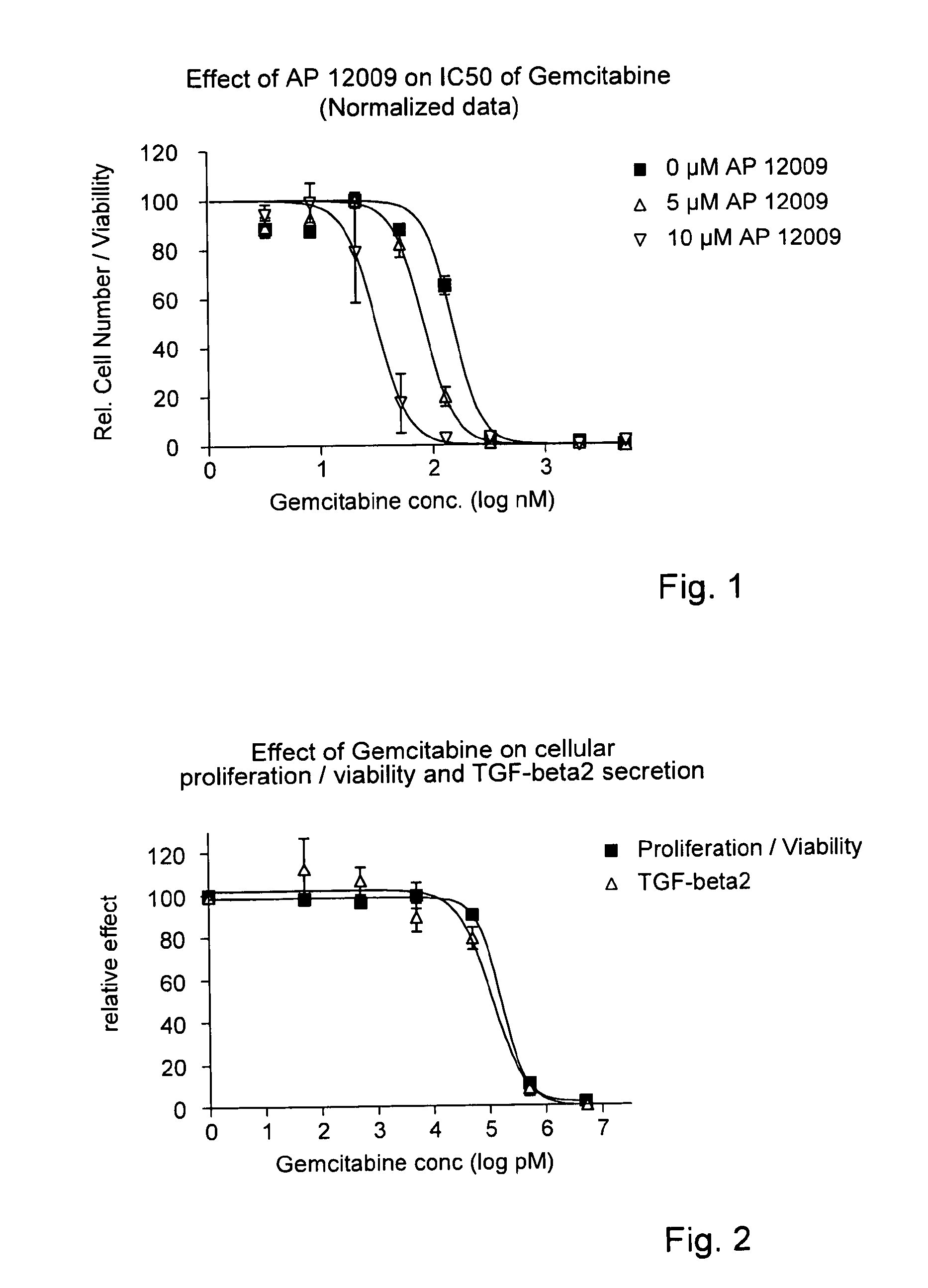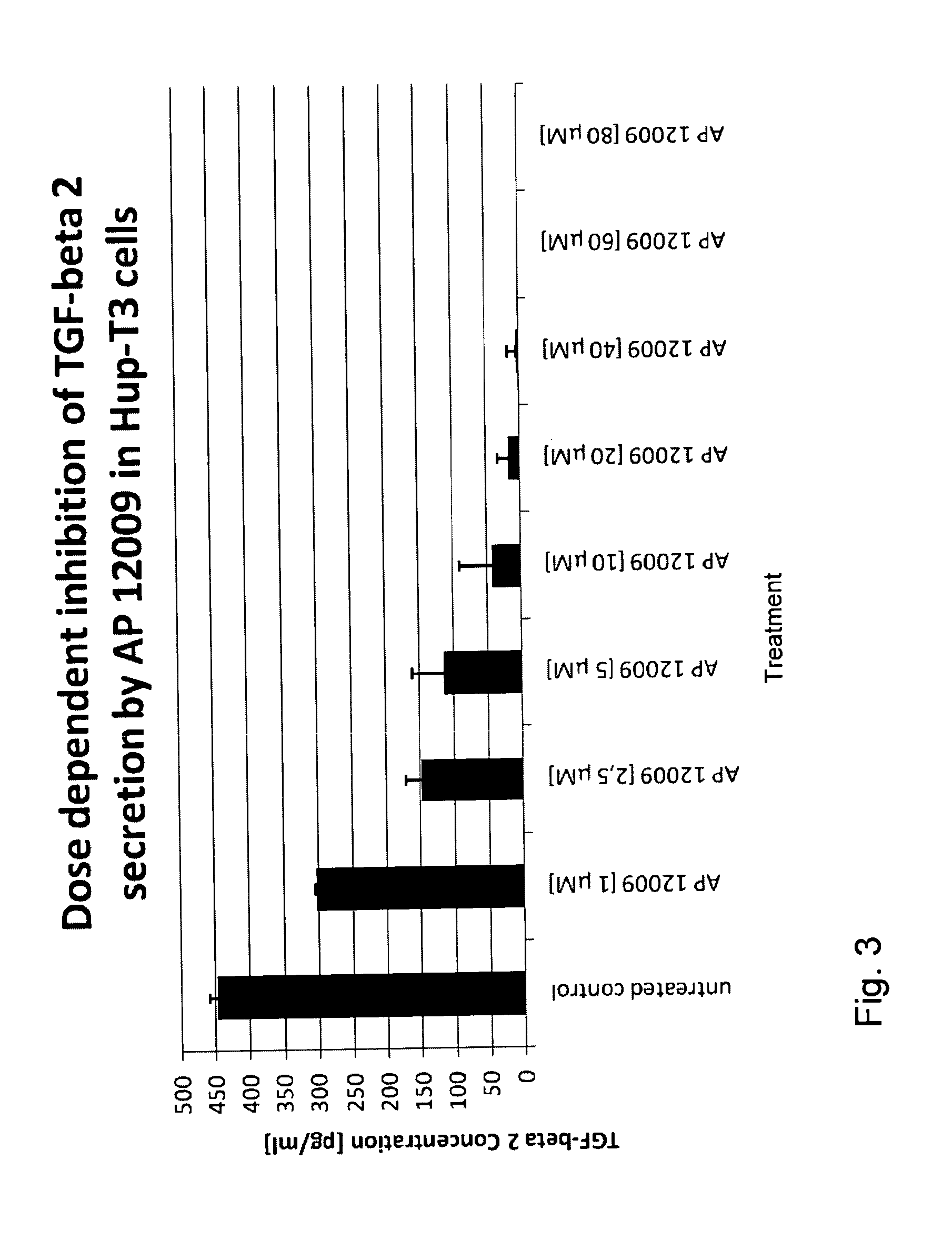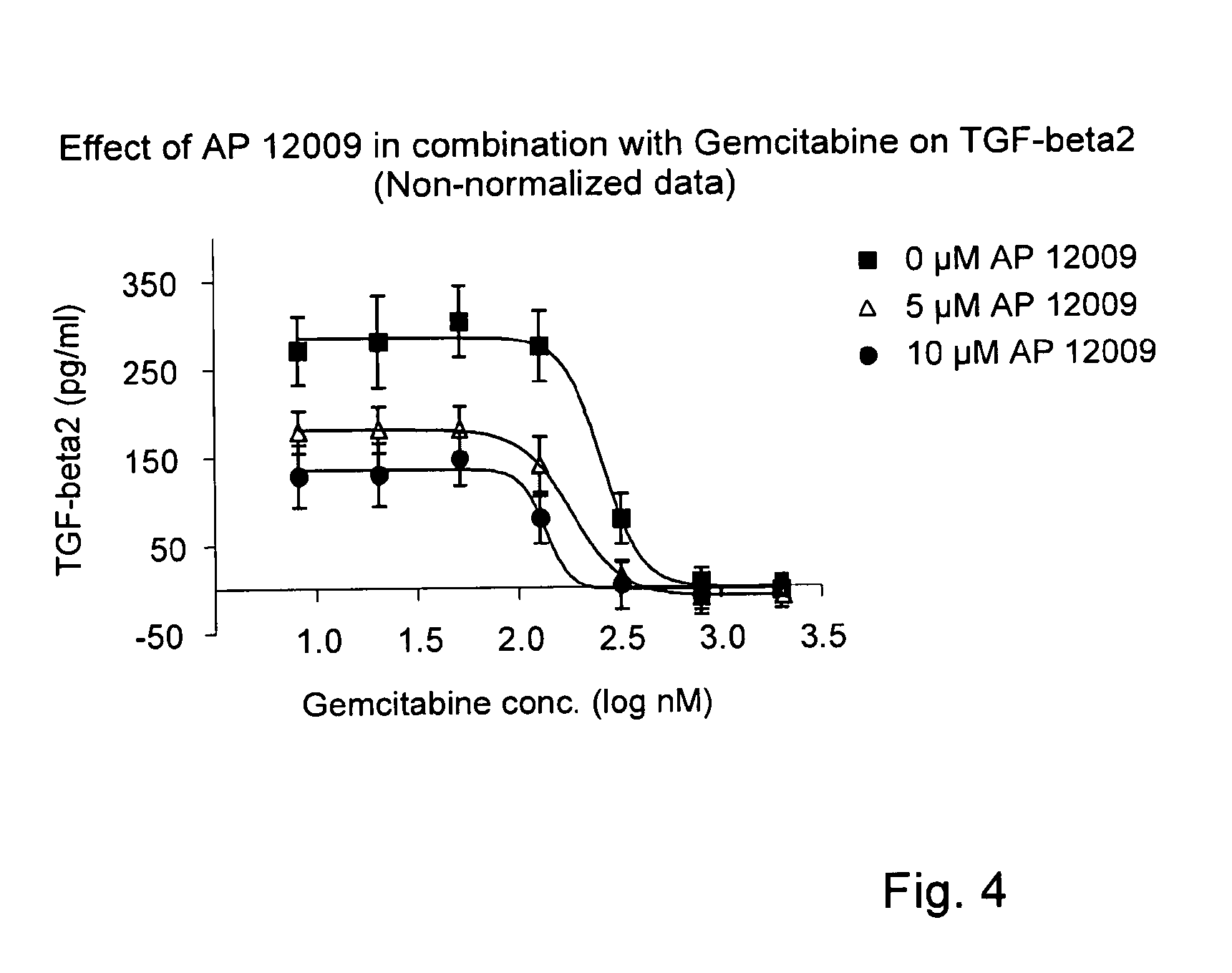Combination of a chemotherapeutic agent and an inhibitor of the TGF-beta system
a technology of tgfbeta and chemotherapeutic agents, which is applied in the field of pharmaceuticals, can solve the problems of prolonging the survival of patients, increasing the side effects of chemotherapeutic agents with antisense oligonucleotides, and not showing any other positive effect for patients suffering from non-small-cell lung cancer, and achieves the effect of significantly increasing the cytotoxic effect of temozolomid
- Summary
- Abstract
- Description
- Claims
- Application Information
AI Technical Summary
Benefits of technology
Problems solved by technology
Method used
Image
Examples
example 1
TGF-Beta 2 Antisense Oligonucleotide Reducing the IC50 of Gemcitabine (FIG. 1)
[0147]In a 96-well tissue culture plate 4000 cells / well of a human pancreatic tumor cell line Hup-T3 (German Collection of Microorganisms and Cell Cultures GmbH, Braunschweig, Germany) were seeded. The Hup-T3 cell line is not resistant to gemcitabine. One day after seeding, cells were co-treated with eight different gemcitabine concentrations, i.e., 5 μM, 2 μM, 800 nM, 320 nM, 128 nM, 51.2 nM, 20.5 nM, 8.2 nM, 3.3 nM and 0 nM gemcitabine, respectively, in combination with 0 μM (▪), 5 μM (Δ) or 10 μM (∇) TGF-beta 2 antisense oligonucleotide, for example SEQ ID No. 30, for 5 h. Thereafter the first treatment solution comprising gemcitabine and the TGF-beta 2 antisense oligonucleotide was removed and replaced by a second treatment solution containing the TGF-beta 2 antisense oligonucleotide, but no gemcitabine. The treatment solution was optionally replaced after 3 days.
[0148]After 7 days of total treatment, ...
example 2
Effect of Gemcitabine on TGF-Beta 2 Secretion (FIG. 2)
[0150]The effect of gemcitabine on TGF-beta 2 expression and secretion, respectively, was investigated on Hup-T3 cells. Gemcitabine was administered to the Hup-T3 cells in following concentrations: 5 μM, 0.5 μM, 50 nM, 5 nM, 0.5 nM, 0.05 nM or 0 nM, and the cells were incubated for 5 h according to Example 1. The treatment solution was optionally replaced after 3 days.
[0151]After 7 days of treatment, cell supernatants were removed for the analysis of TGF-beta 2 concentration. The TGF-beta 2 secretion (Δ) was quantified by a standard TGF-beta 2-ELISA Kit (R&D Systems, Minneapolis, USA) according to the manufacturer's instructions.
[0152]The proliferation / viability of the Hup-T3 cells (▪) was analyzed using the EZ4U method according to the manufacturer's instructions (Biozol Diagnostca Vertrieb GmbH), and the OD was measured after an incubation time of 75 min with EZ4U solution using the plate reader “Fluostar-Optima” (BMG LABTECH G...
example 3
Effect of the TGF-Beta 2 Antisense Oligonucleotide on TGF-Beta 2 Secretion (FIG. 3)
[0154]In a further experiment the effect of the TGF-beta 2 antisense oligonucleotide on the expression and secretion, respectively, of TGF-beta 2 was investigated on Hup-T3 cells. The TGF-beta 2 antisense oligonucleotide, for example SEQ ID No. 30, was administered to the Hup-T3 cells as described in Example 1 (0 μM, 1 μM, 2.5 μM, 5 μM, 10 μM, 20 μM, 40 μM, 60 μM, or 80 μM TGF-beta 2 antisense oligonucleotide). The cells were incubated according to Example 1 and after 7 days of treatment, the cell supernatants were removed for the analysis of TGF-beta 2 concentration using the TGF-beta 2-ELISA Kit of R&D Systems.
[0155]As expected, the TGF-beta 2 antisense oligonucleotide inhibited the TGF-beta 2 expression and secretion, respectively, in a dose dependent manner (see FIG. 3).
PUM
| Property | Measurement | Unit |
|---|---|---|
| time | aaaaa | aaaaa |
| molecular weight | aaaaa | aaaaa |
| molecular weight | aaaaa | aaaaa |
Abstract
Description
Claims
Application Information
 Login to View More
Login to View More - R&D
- Intellectual Property
- Life Sciences
- Materials
- Tech Scout
- Unparalleled Data Quality
- Higher Quality Content
- 60% Fewer Hallucinations
Browse by: Latest US Patents, China's latest patents, Technical Efficacy Thesaurus, Application Domain, Technology Topic, Popular Technical Reports.
© 2025 PatSnap. All rights reserved.Legal|Privacy policy|Modern Slavery Act Transparency Statement|Sitemap|About US| Contact US: help@patsnap.com



